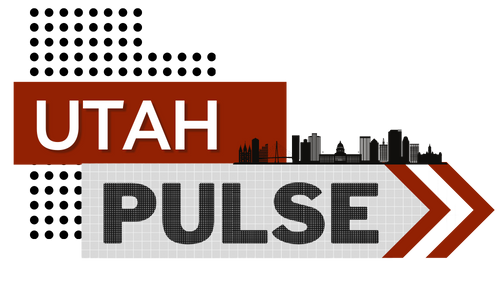
Imagine you’re steering a ship through stormy seas. The waves are risk events – regulatory changes, internal fraud, market swings – and if your instruments (the financial systems, oversight, checks and balances) are faulty or imprecise, you’ll drift off-course, hit icebergs, or worse, capsize.
In the real world, companies without strong oversight often get caught off guard. A CFO misread, a missing control, or a delayed warning flag can lead to penalties, reputational damage, or an avoidable liquidity crunch. That’s the gap effective financial oversight fills: it doesn’t eliminate risk, but it gives you early warning systems, clear guardrails, and accountability.
There is a definable, actionable line between a company that stumbles and one that weathers storms intact. Let’s walk that line together.
What “effective financial oversight” really means (not buzzword fluff)
You’ll often hear CFOs or auditors throw around terms like “governance,” “controls,” “audit trail,” or “segregation of duties.” But unless you see those in action, integrated, living in your day-to-day, they’re just buzzwords. Effective oversight is when:
- Every major transaction (capex, contracts, vendor spend) touches at least two checkpoints.
- Your financial dashboards aren’t reactive – they’re monitoring pulse indicators and alerting deviations.
- Compliance obligations (tax, industry regulation, reporting) are embedded, not tacked-on.
- A culture exists where raising red flags is normalized, not punished.
In practice, you might embed periodic reviews, automated checks, reconciliation routines, and a continuous feedback loop between operations, finance, and leadership.
Many organizations today bring in a Fractional Finance Director to plug oversight gaps. That role provides senior-level financial leadership – not as a full-time hire (and cost burden) – but part-time or on demand. This helps mid-sized or growing firms embed controls, set strategy, and ensure compliance without overextending headcount.

The triad ─ Risk, compliance, and cost – how weak oversight amplifies disasters
Let me break down how neglecting oversight leads directly to three big categories of damage:
1. Risk accumulation becomes invisible until it’s explosive
When oversight is weak, small risks compound. Vendor dependency, cash flow mismatches, or unmonitored liabilities fester. The moment you try to raise capital, partner with a bigger player, or weather a downturn – those hidden flaws surface catastrophically.
2. Compliance liabilities mount (often silently)
You may think “we’re small, regulators won’t care,” but compliance isn’t optional. In 2025, 78% of companies report using analytics to monitor compliance risk – because the alternative is blindspots.
Also, 35% of risk executives cite compliance/regulatory risk as one of the greatest threats to growth.
If you mis-file a tax, fail a requirement, or overlook an industry regulation (ESG, anti–money laundering, data privacy), the fines are direct – but the ripples (lawsuits, public trust, delayed funding) are far worse.
3. Costly mistakes get magnified
Often overlooked is the “cost of doing nothing right.” When controls are weak:
- You’ll overpay vendors, miss discounts, or duplicate purchases.
- Inventory shrinkage or fraud goes unmonitored.
- You miss accruals or misestimate reserves, leading to blind spots in cash forecasting.
- You lose time and money on audits, rework, or internal investigations.
A study on bank regulatory oversight showed that enhanced oversight significantly reduced risky bets and improved long-term stability.
Think of oversight as the lens through which you see costs before they spiral.

Case in point ─ When oversight saved a business from disaster
I once consulted for a software firm that had exploded in revenue but lacked oversight. Their vendor payments and contract scopes were handled in ad-hoc fashion. One client raised a dispute over overbilling, a vendor threatened legal action over scope creep, and cash started draining.
We brought in a fractional oversight lead (effectively a “watchtower” role). Within weeks:
- A reverse audit cleared $250k of misallocated payments.
- Process flows were annotated: all new contracts had to go through the finance liaison.
- The leadership realized how blind they were to exposure zones.
They didn’t just “recover balance sheets” – they built a system so they could grow without breaking. That same client later raised a new round and benefitted from having a clean, auditable financial structure.
This is why even fast-growing firms need to pause and ask: what holes am I ignoring?
Measuring oversight maturity and staying ahead
You can’t “set and forget.” Effective oversight requires evolution. Here are metrics & milestones to watch:
- Exception rate: how many irregular transactions per 1,000 are raised and resolved.
- Audit findings over time: are repeat issues shrinking?
- Control coverage: percentage of high-risk processes under oversight.
- Response time: how fast does someone act when an alert fires?
- Compliance breach count: ideally zero, but track near-misses.
Most firms still acknowledge significant room for improvement in governance, risk, and compliance. That tells you there’s no “done state.”
Also: 76% of financial services firms increased compliance spending in the last year, with some dedicating up to 20–30% of revenue to compliance-related activities.
That’s a signal: ignoring oversight is very expensive.

Final steps ─ getting started with oversight that scales
To close this out, think of building oversight like building your startup: start with an MVP, validate, iterate, and then scale. Here’s a mini launch plan:
- Risk radar – run a rapid risk discovery: mapping contracts, vendors, cash flow bottlenecks, compliance obligations.
- Control quick-wins – pick 1–2 critical flows (e.g. vendor invoices, capital spend) and embed oversight.
- Dashboard baseline – choose 3–5 pulse metrics (variants, exceptions, liquidity) and build live reporting.
- Feedback and audit – schedule monthly reviews, get root-cause on any exceptions, learn.
- Scale up – expand oversight to new functions, institutionalize the role (in-house or fractional lead).
If you begin with that and keep improving – embedding oversight not as a burden but as your defensive backbone – you’ll find companies don’t fail for lack of vision nearly as often as they fail for lack of guardrails.
Your discipline in oversight becomes your moat. And every time you squash a hidden risk or compliance gap, you’re investing in confidence – internally and externally. That’s real protection.



